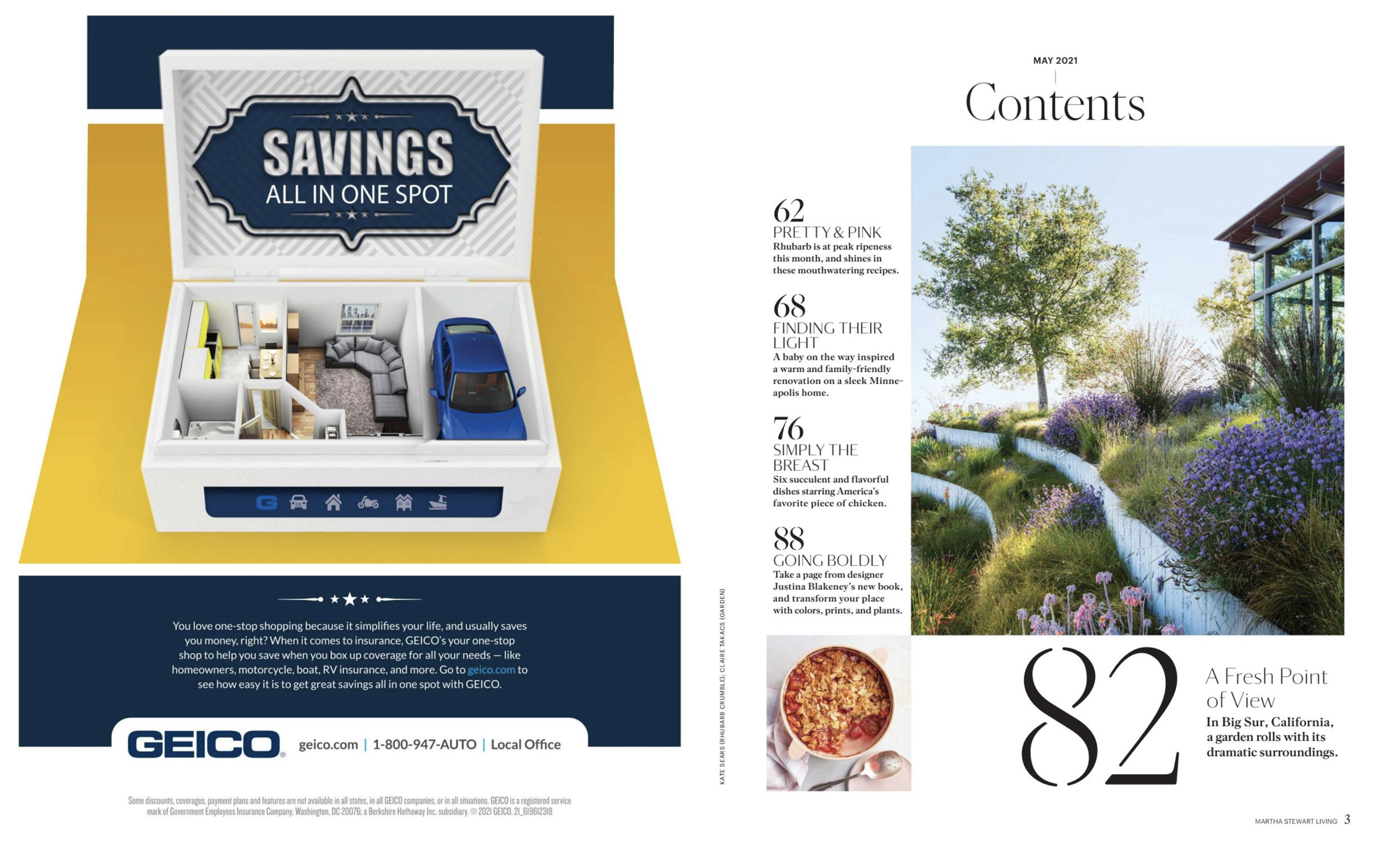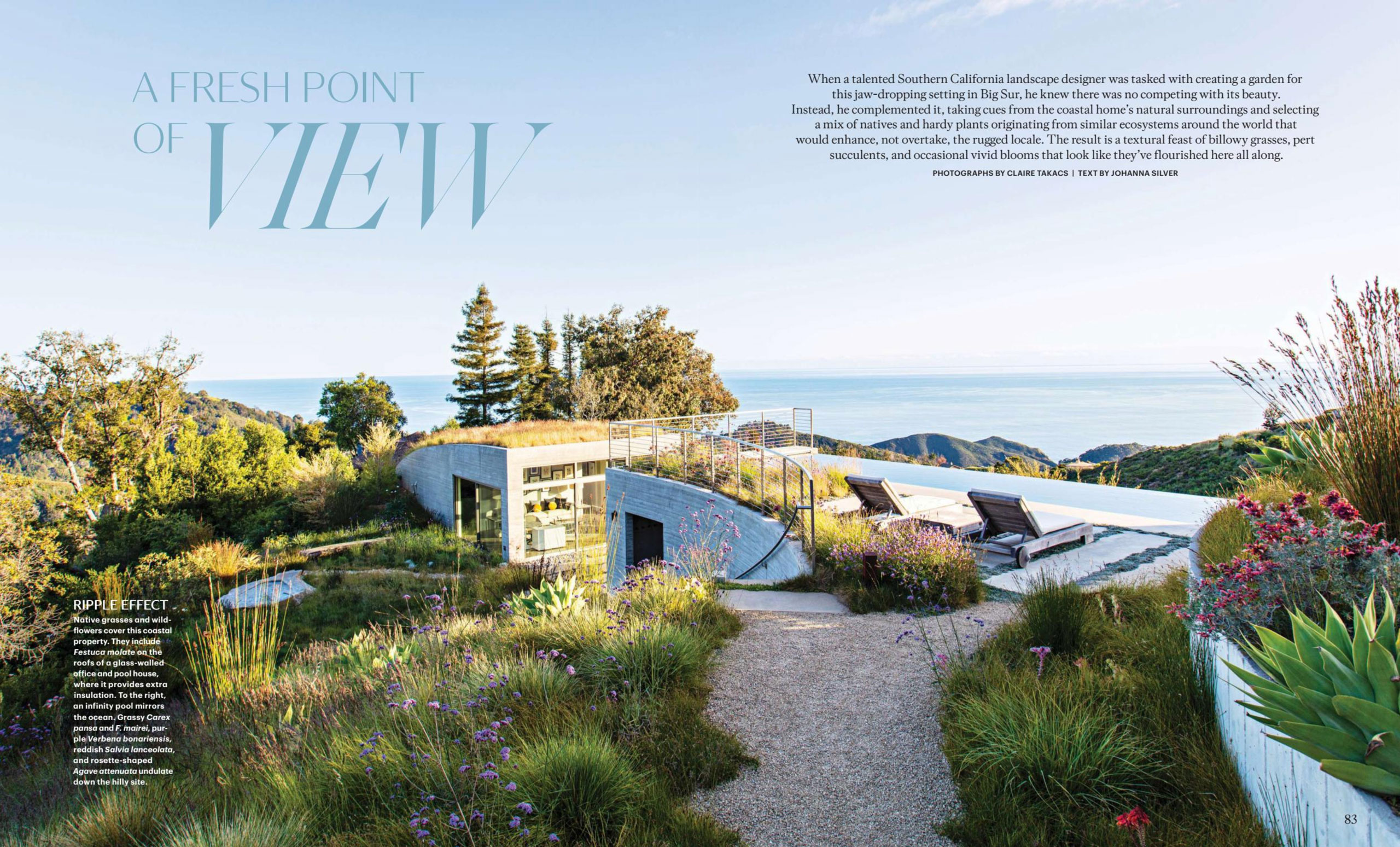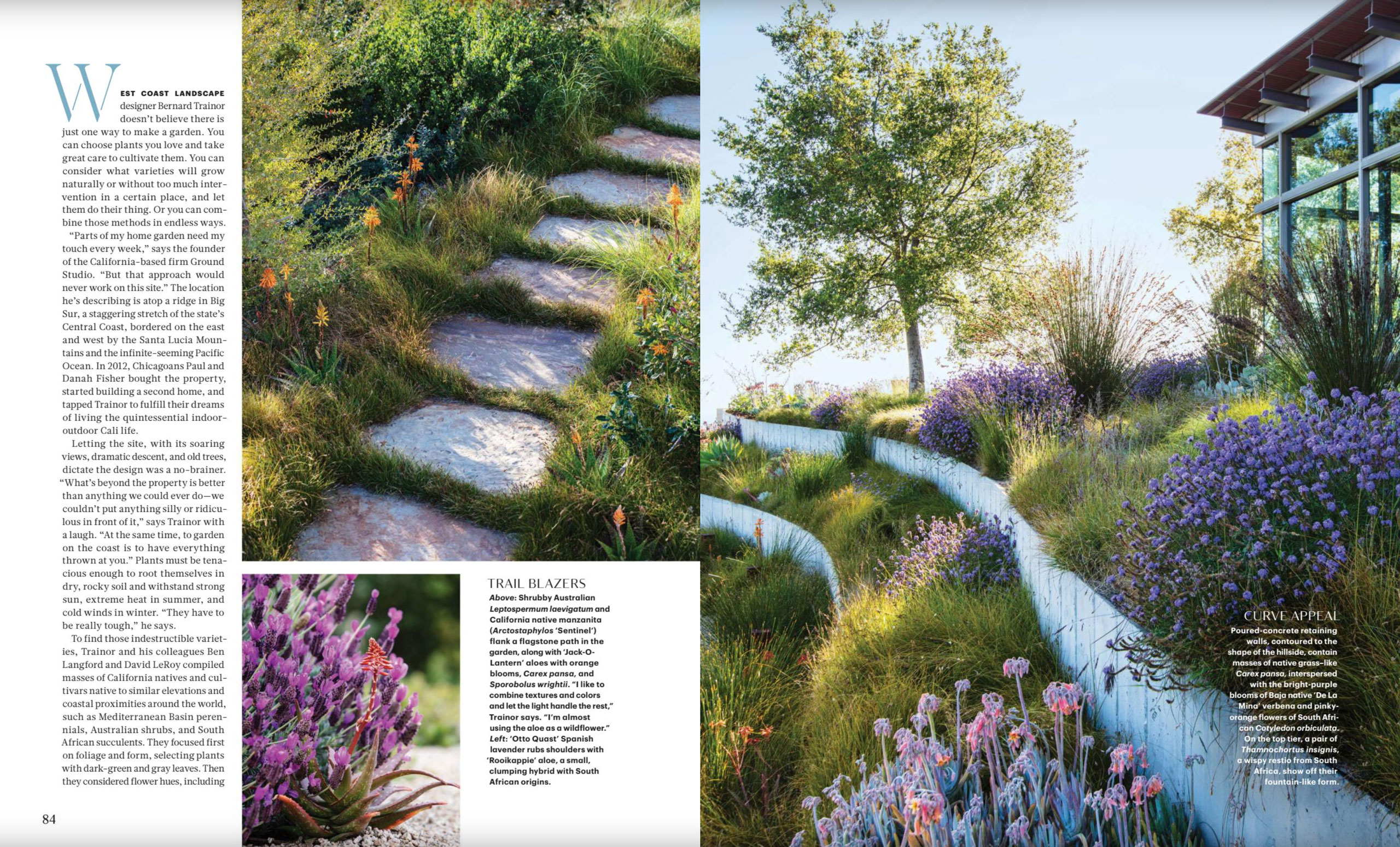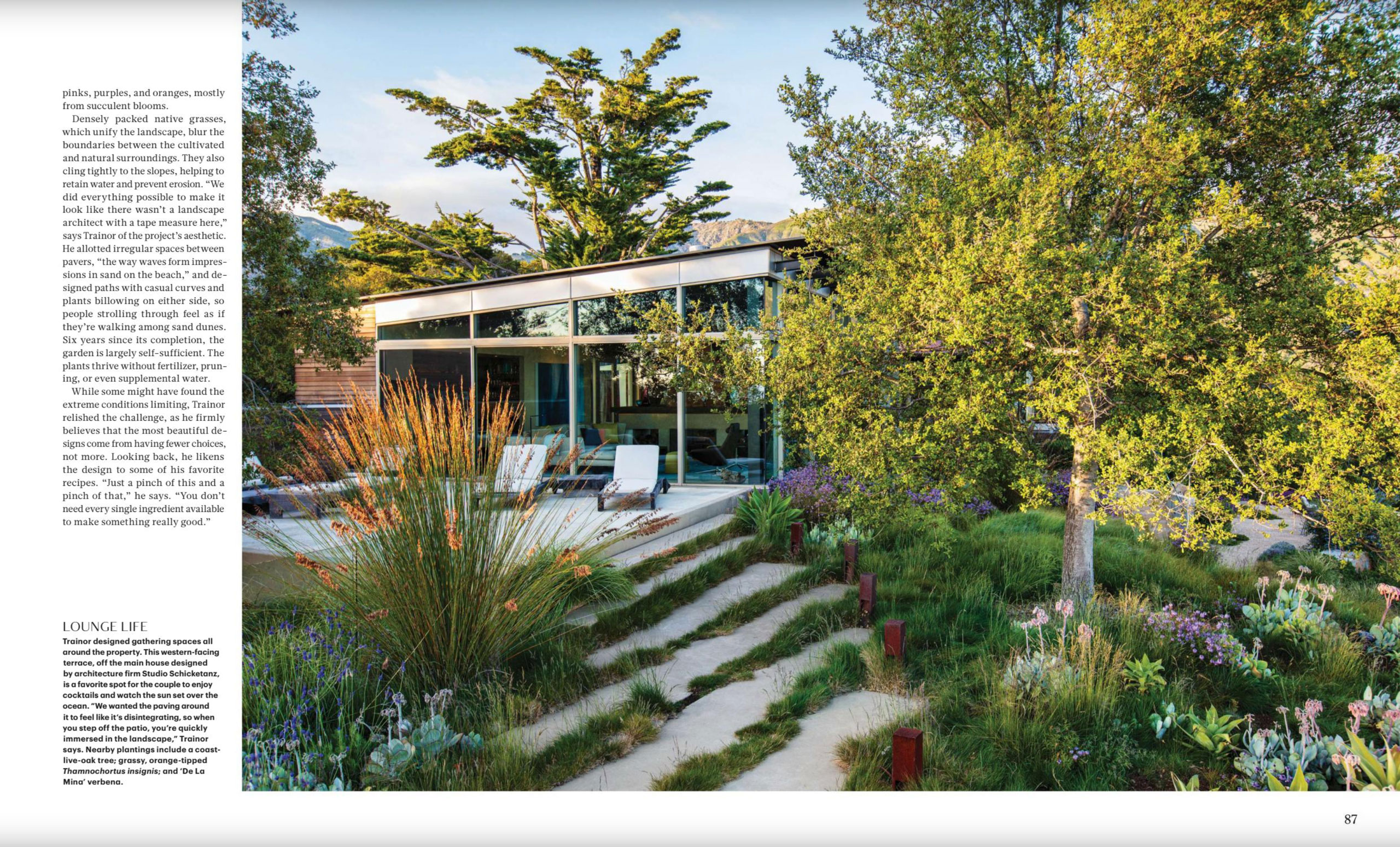A Fresh Point of View
When a talented Southern California landscape designer was tasked with creating a garden for this jaw-dropping setting in Big Sur, he knew there was no competing with its beauty. Instead, he complemented it, taking cues from the coastal home’s natural surroundings and selecting a mix of natives and hardy plants originating from similar ecosystems around the world that would enhance, not overtake, the rugged locale. The result is a textural feast of billowy grasses, pert succulents, and occasional vivid blooms that look like they’ve flourished here all along.
West Coast landscape designer Bernard Trainor doesn’t believe there is just one way to make a garden. You can choose plants you love and take great care to cultivate them. You can consider what varieties will grow naturally or without too much intervention in a certain place, and let them do their thing. Or you can combine those methods in endless ways.
“Parts of my home garden need my touch every week,” says the founder of the California-based firm Ground Studio. “But that approach would never work on this site.” The location he’s describing is atop a ridge in Big Sur, a staggering stretch of the state’s Central Coast, bordered on the east and west by the Santa Lucia Mountains and the infinite-seeming Pacific Ocean. In 2012, Chicagoans Paul and Danah Fisher bought the property, started building a second home, and tapped Trainor to fulfill their dreams of living the quintessential indoor-outdoor Cali life.
Letting the site, with its soaring views, dramatic descent, and old trees, dictate the design was a no-brainer. “What’s beyond the property is better than anything we could ever do – we couldn’t put anything silly or ridiculous in front of it,” says Trainor with a laugh. “At the same time, to garden on the coast is to have everything thrown at you.” Plants must be tenacious enough to root themselves in dry, rocky soil and withstand strong sun, extreme heat in summer, and cold winds in winter. “They have to be really tough,” he says.
To find those indestructible varieties, Trainor and his colleagues Ben Langford and David LeRoy compiled masses of California natives and cultivars native to similar elevations and coastal proximities around the world, such as Mediterranean Basin perennials, Australian shrubs, and South African succulents. They focused first on foliage and form, selecting plants with dark-green and gray leaves. Then they considered flower hues, including pinks and oranges, mostly from succulent blooms.
Densely packed native grasses, which unify the landscape, blur the boundaries between the cultivated and natural surroundings. they also cling tightly to the slopes, helping to retain water and prevent erosion. “We did everything possible to make it look like there wasn’t a landscape architect with a tape measure here,” says Trainor of the project’s aesthetic. He allotted irregular spaces between pavers, “the way waves form impressions in sand on the beach,” and designed paths with casual curves and plants billowing on either side, so people strolling through feel as if they’re walking among sand dunes. Six years since its completion, the garden is largely self-sufficient. The plants thrive without fertilizer, pruning, or even supplemental water.
While some might have found the extreme conditions limiting, Trainor relished the challenge, as he firmly believes that the most beautiful designs come from having fewer choices, not more. Looking back, he likens the design to some of his favorite recipes. “Just a pinch of this and a pinch of that,” he says. “You don’t need every single ingredient available to make something really good.”





